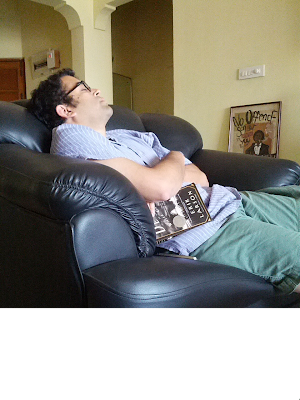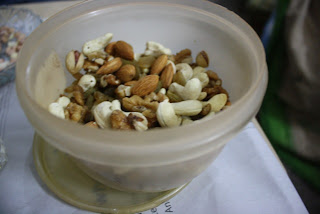I truly can't believe it, but I'm scheduled to board a plane not too long from now that will carry me home to San Francisco. My seven weeks of leave have flown by in a flash!
I know I've been quite absent for the past 10 days, but there's more to come. While I haven't been posting, I have been writing -- in and around hanging out with family and dear friends, eating delicious Delhi and Bombay dishes and just plain relaxing after traveling to something like a dozen cities in just under five weeks. Over the next month or so, I'll post here and there to recount some of the fun, the frustrations and, yes, the food. Stay tuned!
For now: Thank you to all who have joined in this adventure with me, via the blog, via video chat and, of course, in person! It's been an incredible journey, as I knew it would be, and I'm so thankful to have finally had the chance to make it happen.
And as a parting picture, please enjoy this snap of me from earlier today, taken by my lovely husband. Mango season is here! Just one more nice surprise along the way on this trip. Incredible India after all.
I know I've been quite absent for the past 10 days, but there's more to come. While I haven't been posting, I have been writing -- in and around hanging out with family and dear friends, eating delicious Delhi and Bombay dishes and just plain relaxing after traveling to something like a dozen cities in just under five weeks. Over the next month or so, I'll post here and there to recount some of the fun, the frustrations and, yes, the food. Stay tuned!
For now: Thank you to all who have joined in this adventure with me, via the blog, via video chat and, of course, in person! It's been an incredible journey, as I knew it would be, and I'm so thankful to have finally had the chance to make it happen.
And as a parting picture, please enjoy this snap of me from earlier today, taken by my lovely husband. Mango season is here! Just one more nice surprise along the way on this trip. Incredible India after all.
 |
| Mangoes are a sticky, delicious business. |
















































